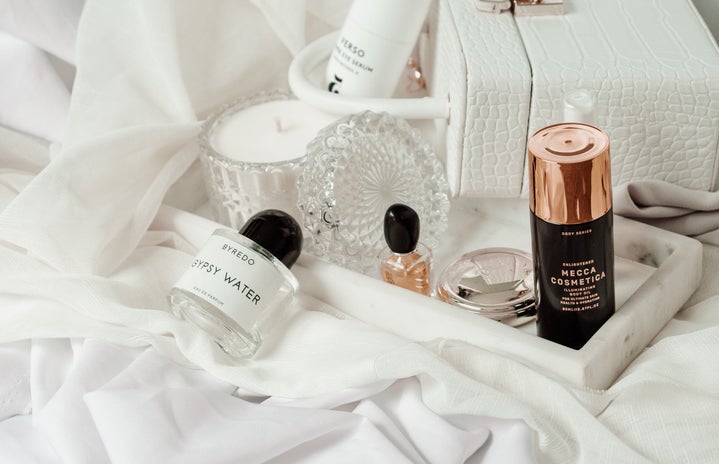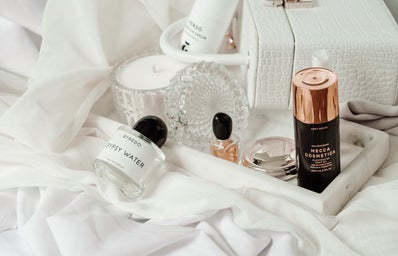Look around to someone beside you. They may be of a different gender, ethnicity, age, color…do they have the same definition as yours? Do you feel the previously mentioned factors have anything to do with your answer? Then, what is beautiful if we may all have different definitions of the word? Do we try to look beautiful for ourselves or others? And if we do it for others, why try at all if we know the person right next to us may view our version of beautiful as “just alright” or even ugly? You can’t please everyone and, in trying to do so, just may end up pleasing no one yourself included.
In Japan, women smear Nightingale bird droppings over their faces. The droppings are blended with other ingredients to create a powder that is often associated with that of ancient Japan. However its association, this beautification process is as prominent today as ever because these women find the bird waste promotes both soft skin and shiny hair.
In Mauritania, large, robust women are far more beautiful than thinner women. To achieve this, mothers often force fed their daughters, a process that is now outlawed; girls as young as five years old were made to drink as much as five gallons or 16,000 calories worth of fatty cow or camel milk each day. In this community, stretch marks are deep signs of beauty.
Despite the beauty ban in the 1960s and 1970s, beauty is now the fourth biggest industry in China. Some women and men are undergoing painful surgeries that create multiple breaks in patients’ legs, using metal bars to stretch the bones apart. When the bones finally grow back together over a year of recovery, the individual is taller by as much as several inches. It is believed that the taller an individual is, the more success will come to them; they are viewed as more beautiful and of a higher status.
Women of the Amazon paint their entire bodies using juices from plants and blood from animals; they also extensively pierce their bodies. Maori women of New Zealand, however, take a more permanent approach. They tattoo their faces, especially their chin and lips; entirely blue lips are the most desired by natives. These tattoos also serve as information for others in the community: rank, lineage, special skills, marriage status.
In America, women display their own beauty using plastics surgery, hair extensions and dye, dieting, thick cosmetics, UV lighting in tanning salons and many other methods. Generally Americans view beauty as being tall and thin with an unblemished face, long flowing hair, adorned nails, bronzed skin, voluminous lips and just the right amount of makeup to appear stunning yet approachable. This look is often unnatural and unattainable, resulting in a sometimes artificial “flawlessness”.
“No one looks like that,” says fourth year undergrad Raquel Flynn*, “Not even the celebrities look like that! They’re airbrushed, touched up, given all these little body suits and intricate makeup sessions. In real life, they don’t look like how we see them on our TV screens or magazines. The scary part is that we all know this and yet that doesn’t stop us from emulating and regurgitating what we see” It’s true many women knowingly recognize the smoke and mirrors that go into creating a “naturally beautiful” look, but why does that not mean they are also above these preposterous standards? What extent would the average American take to be considered beautiful when the bar keeps being raised continually higher? “I would do anything, I swear,” says Flynn, “I’d probably use ‘em all, any plastic surgery or beauty product or scheme on the market. People look so much happier…I just feel like life would be easier.”
But why take such drastic strides toward perfect beauty when everyone’s definition is different? “Perfect doesn’t exist so many [women] keep trying and trying and trying and just never feel content,” says Flynn and she’s right. In a survey about body image conducted by Dove, “90 percent of the women polled around the globe admitted they want to change some part of their appearance”.
Raquel Flynn’s mother, a woman in her late-forties, chimed into the discussion. “I’m sure I fall within that 90 percent that wants to change something. It’s impossible not to when American society judges only on appearance…[However,] I think that you need to get to know a person and understand where they’re coming from before you decide if they’re beautiful in your own eyes…I find people beautiful by the way they present themselves, how they handle themselves in situations. They’re beautiful from the inside out,” says Kelly Flynn. So ladies, when you take that next step in your cosmetic routine, take a step back first and ask yourself who you are truly doing this to please. Your best friend? Your mother? Your boyfriend? Yourself? “I would rather be happy with myself, ” decided both Flynn women.
*Names have been changed at the request of the interviewee

